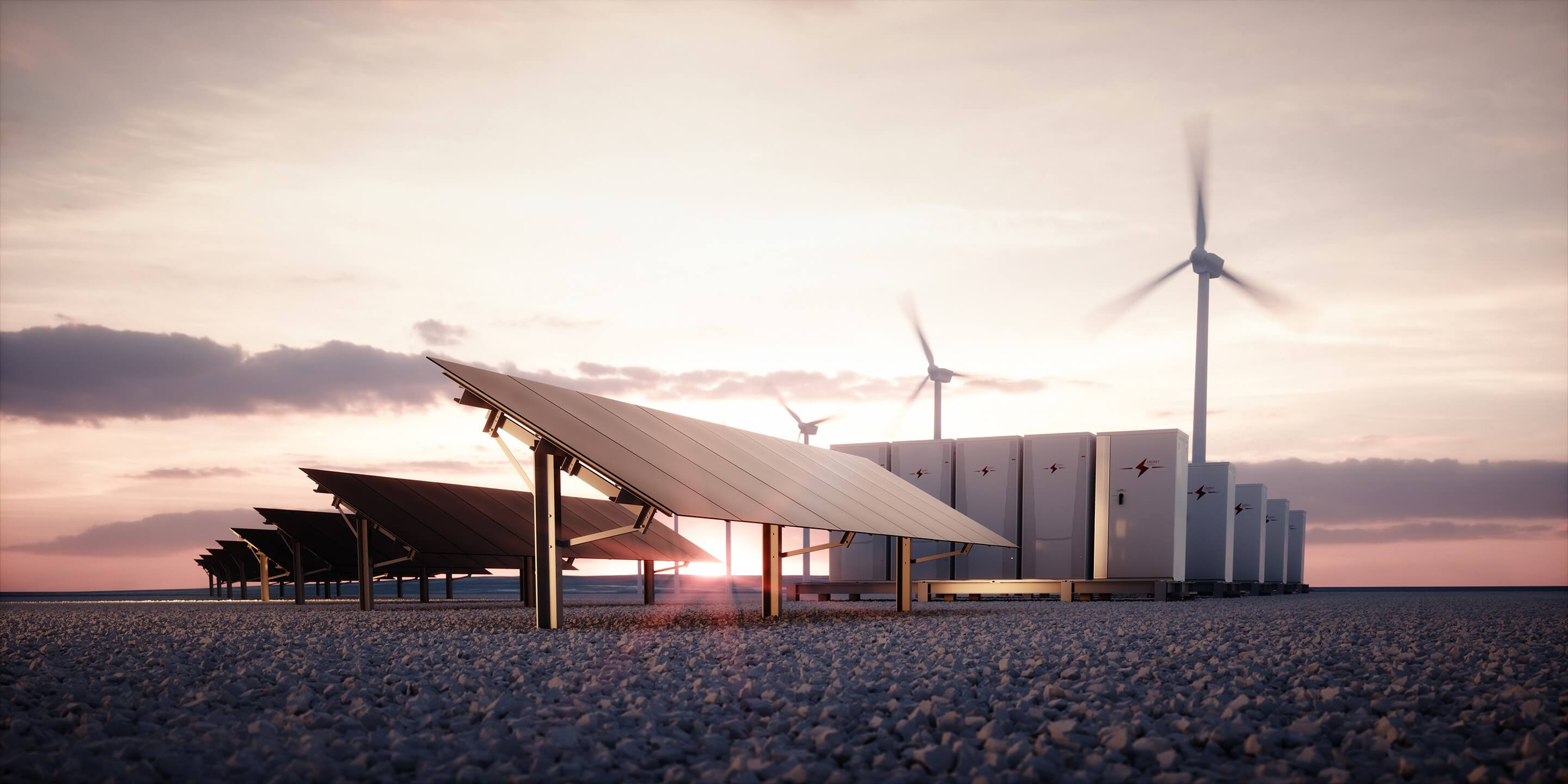Reimagine Your
Utilities Ecosystem
The future of utilities starts with the right strategic partner. Honeywell has digital solutions, expertise and tools to help modernize your grid and digitalize operations across the value chain.
Utility ecosystems are facing new challenges. With global electricity demand expected to grow at 3.4% annually through 2026 and water demand also facing unprecedented growth, many utilities must make sure they can meet expanding needs.1 This means that prioritizing infrastructure improvements, exploring ways to support cleaner, safer, more reliable and more affordable energy sources, and strengthening cybersecurity postures, are critical. Honeywell supports the utilities value chain from generation to transmission to distribution by helping to increase information access, connectivity, productivity, safety and security.
1,000+ Utility Customers
Partner with Honeywell
>150 Million Honeywell Meters
The number of Honeywell meters used in homes around the world
>20 Years of Cybersecurity Expertise
In power generation, transmission and distribution
Tackling Grid Infrastructure Updates through Digitalization
Renewable energy sources are projected to make up 45-50% of global power by 2030 and 60-70% by 20402 yet 65% of utility providers cite "infrastructure upgrades" as their biggest challenge.3 Honeywell can help close the gap with a real-time performance management digital tool to help drive actionable insights, integrated SCADA solutions for predictable costs and easy upgrades, and digital twin solutions to test scenarios and reduce downtime in a virtual environment.
Maximize Your Grid Resilience
Shifting to weather-dependent sources like solar and wind adds complexity to forecasting supply and demand. Our distributed energy resource platform can help strengthen demand response programs for more efficient energy management and better customer engagement. Honeywell also offers microgrid controls, battery energy storage systems and energy management systems that enable virtual power plants to help drive reliable and cost-effective operations.
Build Underground Digital Libraries with Line Locating
The annual societal cost of damage to buried utility lines in the United States is estimated at $30 billion,4 with excavation also contributing to greenhouse gas emission leaks. Honeywell’s line locating services help utilities reduce damage risk, make technological improvements and provide accurate electronic data on utility locations. Our emissions management solutions also enable timely remediation of leaks.
From Cost Savings to Workforce Productivity
According to the EIA, 2019 saw U.S. distribution utilities spend $14.6 billion5 on operations and maintenance, including line upkeep, vegetation management and storm repair. Honeywell helps utilities optimize spending with real-time performance management and integrated SCADA solutions at competitive costs. Our automation solutions help improve processes for integrated security and telecommunications and our process automation and autonomy tools help optimize workplace safety and productivity.
From Advanced Gas Meters to Gas Leak Detection
Annually, U.S. fire departments respond to around 125,000 gas leaks and gas leaks cause 4,200 fires.6 Honeywell’s smart meter technology, used by approximately 150 million homes, features automatic shut-off and real-time network visibility to monitor distribution, usage and incidents. We can help protect residential customers, reduce truck rolls, lower operational costs and more.
From Carbon Capture to Green Hydrogen
In an October 2024 EY survey, 57% of power and utilities respondents plan to invest in decarbonization initiatives, compared to 33% across sectors.7 Utilities can decarbonize by shifting to lower-carbon generation, improving efficiency of existing power plants, expanding demand-side management offerings to reduce electricity consumption and adopting carbon capture. As a strategic partner, Honeywell supports these efforts with technologies that drive green hydrogen, carbon capture solutions, battery energy storage systems and long duration energy storage growth.
Keeping Your Utility Protected
The rise of smart grids, smart meters and interconnected networks makes utilities more vulnerable to OT cyber threats. In fact, 75% of industrial operations faced cyber-attacks last year, with utility organizations among those being targeted.8 Honeywell has solutions that help reduce risk with automated asset discovery, threat detection, secure remote access and managed security. Let us help protect your OT infrastructure to the same degree as your IT data.
Managing Access to Remote Sites to Integrating Building Operations
From office buildings to power generation plants and remote, unmanned distribution facilities, managing building operations is critical for a utility organization. Whether it is complying with access control regulatory requirements or managing the unique fire and life safety challenges of lithium-ion batteries, Honeywell has building automation solutions designed to help utilities manage their facilities, address operational challenges and streamline processes.
Solving some of your toughest challenges in automation, aviation and energy transition
Automation
Solutions that can help you optimize your operations, empower your workforce and equip you with actionable insights and visualization to help you achieve your goals.
Future of Aviation
Technologies to help expand the supply of sustainable aviation fuel and solutions to support more efficient airside operations, healthier terminals and integrated safety and security systems.
Energy Transition
Solutions that accelerate the shift to more efficient energy sources.
Utilities Frequently Asked Questions
Smart meters and sensors provide near real-time data on energy use and grid conditions, helping utilities and customers make informed decisions. Utilities benefit from more accurate billing, quicker outage detection and restoration and better integration of renewable energy. Honeywell Smart Energy is combining its expertise in smart metering technology with end-to-end smart grid innovations and intelligence to develop connected solutions that empower electricity utilities to better balance resources, help enable grid stability, drive efficiency and increase customer satisfaction. By leveraging actionable data from our smart meters, utilities can benefit from reduced capital and operational expenditures, all while getting reliable service to help your ever-changing business.
Utilities can improve underground line locating by adopting advanced technologies and proactive strategies that help enhance accuracy and reduce risk. Line locating services are critical to public safety as they help protect infrastructure and maintain service reliability. By accurately identifying the location of underground utility lines, such as gas, electric and water, utilities help prevent accidental damage during excavation or construction activities. This approach helps address issues early by reducing the risk of minor damages from escalating into more serious and costly problems.
Distributed energy resource programs (DERs) are small-scale electricity supply or demand resources that are usually situated near sites of electricity use. They help modern energy grids integrate renewable sources of power. Most DERs are connected to the public grid, improving the reliability and resilience of wider energy systems. At times of peak energy consumption, DERs can help utilities balance grid loads to prevent outages and blackouts and even generate power to reduce energy costs. Although they represent a small percentage of power generation, DERs are becoming more common. Examples of DERs include but are not limited to solar panels, wind turbines, battery energy storage systems and electric vehicles.
An integrated SCADA (supervisory control and data acquisition) solution provides real-time monitoring and access to electrical system alarms and events, as well as single line custom displays and troubleshooting analysis tools.
Generation is the first step in the power process, which consists of producing electricity from various energy sources including fossil fuels, nuclear energy and renewables like solar, wind and hydro. Transmission is the next step in the process, where the power that has been generated is transported from power plants to substations. Distribution is the last step in the process. This is when the power is delivered from substations to homes, businesses and industries.
Solutions for the Future of Energy

PRESS RELEASE
Honeywell Acquires Air Products' Liquefied Natural Gas Process Technology and Equipment Business

CASE STUDY
Petronas on Honeywell Emissions Management Solution

CASE STUDY
Advancing Carbon Reduction with ExxonMobil
1. https://www.iea.org/reports/electricity-2024/executive-summary
3. https://zpryme.com/media/infographics/network-trends-for-utility-city-infrastructure-modernization/
4. Common Ground Alliance, CGA Damage Information Reporting Tool 2020 Analysis & Recommendation
5. How technology and improved processes reduce utility O&M costs | Utility Dive
6. NFPA Journal - Early Warning, November/December 2020, https://www.ey.com/en_us/insights/power-utilities/utilities-sector-outlook




